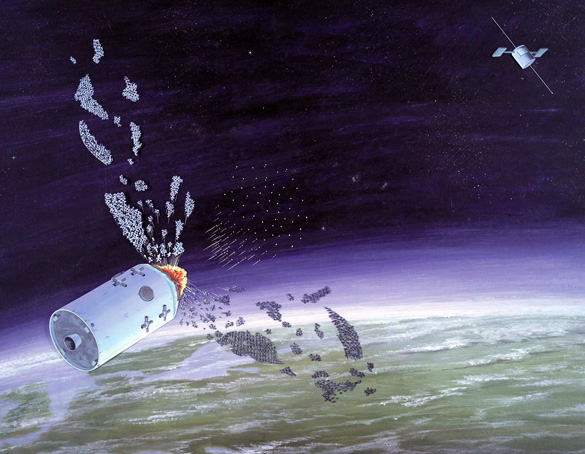Nikunja Bihari Sahu
After shooting down a decommissioned weather satellite with its A-SAT rocket under Mission Shakti, ISRO successfully launched a military satellite, EMISAT, along with 28 foreign satellites in its own launch vehicle PSLV C45 — a new variant of PSLV with four strap-on motors. While the former demonstrated India’s ability to shoot down any moving hostile object in space to safeguard itself and its space assets, the latter clearly showed the capability to launch multiple satellites from a single launch system.
Two years ago, ISRO also successfully launched 104 satellites using a single rocket, including 101 foreign satellites, to create a milestone in space history. ISRO also made its intention clear last year to undertake the greatest feat in space exploration, which is to launch a human into space in its ambitious Gaganyaan mission by 2022. ISRO plans to launch a string of other satellites this year, including Chandrayaan 2, to get a lander and a rover on the Moon. All evidence points to the growing emergence of ISRO as the world’s leading space power and its dominant role in deciding the fate of space exploration in the days to come.
By shooting down a space target, India became the fourth country in the world to demonstrate ASAT weapon system technology in space after the US, Russia and China, which is an indigenous effort to make India stand tall as a space power.
Mission Shakti was a highly complex manoeuvre, conducted at extremely high speeds with remarkable precision and showed the remarkable dexterity of India’s scientists and the success of the country’s space programme.
Mission Shakti was a highly complex manoeuvre, conducted at extremely high speeds with remarkable precision and showed the remarkable dexterity of India’s scientists and the success of the country’s space programme.
By launching EMISAT, India scripted history by making many firsts in space exploration. So far, India has been using aircraft to track down enemy sites. EMISAT will ease the process of locating enemy radars by intercepting their signals from the measurement of electro-magnetic spectrum.
Mastering the outer space has become an inevitable necessity for national security, considering the militarisation of space by various nations in recent times. As the future wars will be predominantly fought from space-based platforms, India’s recent endeavours in space showcase its commitments to exploit this very important domain of strategic frontier.
A notable development in this direction is the contribution of industries outside ISRO to the growth of country’s space sector, which is evident from the fact that industries have contributed about 95 per cent of the hardware for the PSLV C45 mission. Another significant development is the close association of ISRO with defence establishments such as the DRDO, which means ISRO’s expertise will benefit our defence sector immensely in fields such as spying and surveillance and anti-terrorist operations. The third thing worth mentioning is the growing faith of foreign nations on ISRO’s capability to launch satellites as this has a huge potential of earning foreign revenue.
Although some agencies have raised concerns owing to the generation of space debris following the destruction of the satellite posing a threat to space assets of other countries, including the International Space Station, ISRO has downplayed the claim by asserting that the experiment has been carefully chosen in the low earth orbit where fragments will eventually enter the atmosphere and burn up as harmless objects.
The Prime Minister has termed the programmes a peaceful and harmonious exploration of space. The peaceful use of space includes global communication, navigation and weather forecasting, remote sensing, development of new materials in zero gravity among other applications which have great scope to benefit mankind. As ISRO is expected to test more technologies in space as part of its ongoing space programmes, many path-breaking inventions would be made and spill out to main research and eventually permeate the whole of mankind, contributing to progress and development.
The writer is Education Officer, Dhenkanal Science Centre.

